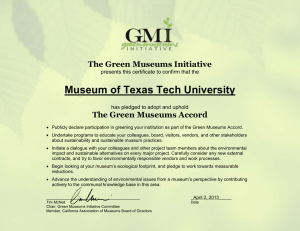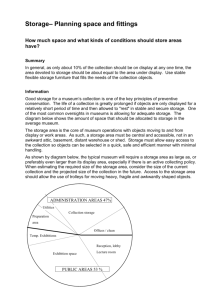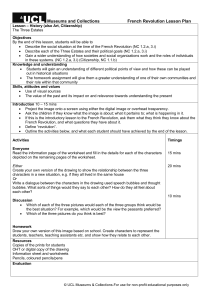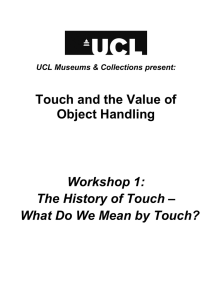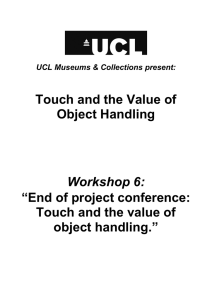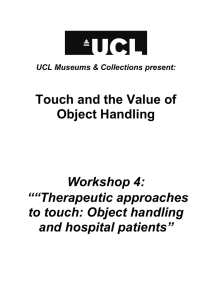Lesson Plan: Critical thinking and debates about museum collections 60 mins Overview
advertisement
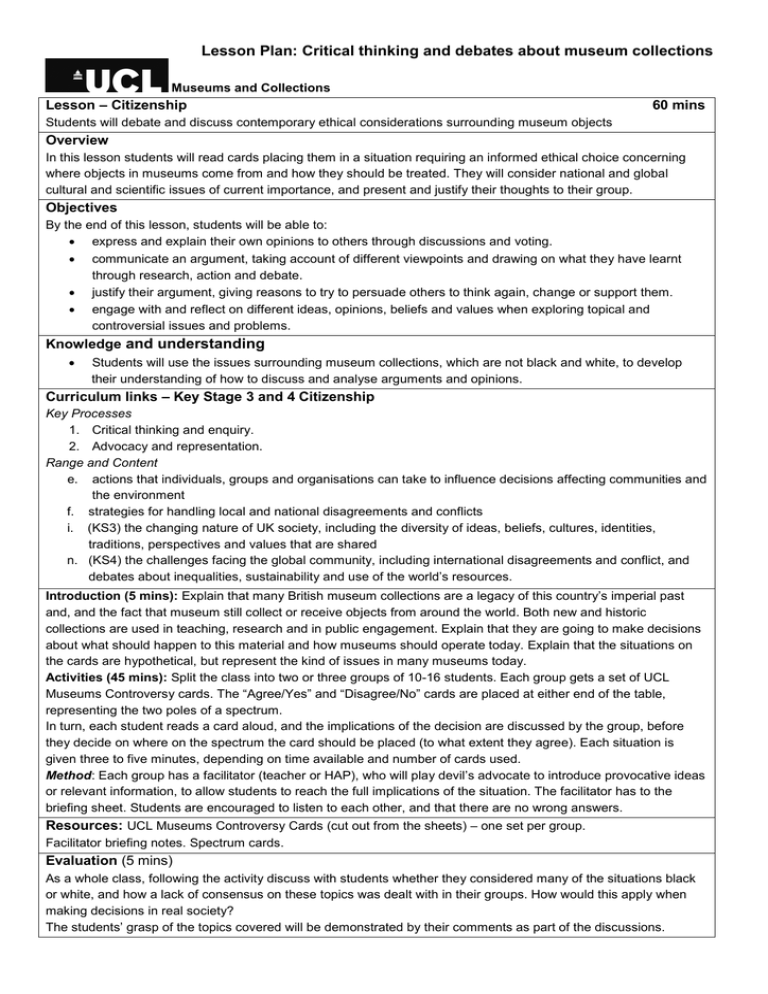
Lesson Plan: Critical thinking and debates about museum collections Museums and Collections Lesson – Citizenship 60 mins Students will debate and discuss contemporary ethical considerations surrounding museum objects Overview In this lesson students will read cards placing them in a situation requiring an informed ethical choice concerning where objects in museums come from and how they should be treated. They will consider national and global cultural and scientific issues of current importance, and present and justify their thoughts to their group. Objectives By the end of this lesson, students will be able to: express and explain their own opinions to others through discussions and voting. communicate an argument, taking account of different viewpoints and drawing on what they have learnt through research, action and debate. justify their argument, giving reasons to try to persuade others to think again, change or support them. engage with and reflect on different ideas, opinions, beliefs and values when exploring topical and controversial issues and problems. Knowledge and understanding Students will use the issues surrounding museum collections, which are not black and white, to develop their understanding of how to discuss and analyse arguments and opinions. Curriculum links – Key Stage 3 and 4 Citizenship Key Processes 1. Critical thinking and enquiry. 2. Advocacy and representation. Range and Content e. actions that individuals, groups and organisations can take to influence decisions affecting communities and the environment f. strategies for handling local and national disagreements and conflicts i. (KS3) the changing nature of UK society, including the diversity of ideas, beliefs, cultures, identities, traditions, perspectives and values that are shared n. (KS4) the challenges facing the global community, including international disagreements and conflict, and debates about inequalities, sustainability and use of the world’s resources. Introduction (5 mins): Explain that many British museum collections are a legacy of this country’s imperial past and, and the fact that museum still collect or receive objects from around the world. Both new and historic collections are used in teaching, research and in public engagement. Explain that they are going to make decisions about what should happen to this material and how museums should operate today. Explain that the situations on the cards are hypothetical, but represent the kind of issues in many museums today. Activities (45 mins): Split the class into two or three groups of 10-16 students. Each group gets a set of UCL Museums Controversy cards. The “Agree/Yes” and “Disagree/No” cards are placed at either end of the table, representing the two poles of a spectrum. In turn, each student reads a card aloud, and the implications of the decision are discussed by the group, before they decide on where on the spectrum the card should be placed (to what extent they agree). Each situation is given three to five minutes, depending on time available and number of cards used. Method: Each group has a facilitator (teacher or HAP), who will play devil’s advocate to introduce provocative ideas or relevant information, to allow students to reach the full implications of the situation. The facilitator has to the briefing sheet. Students are encouraged to listen to each other, and that there are no wrong answers. Resources: UCL Museums Controversy Cards (cut out from the sheets) – one set per group. Facilitator briefing notes. Spectrum cards. Evaluation (5 mins) As a whole class, following the activity discuss with students whether they considered many of the situations black or white, and how a lack of consensus on these topics was dealt with in their groups. How would this apply when making decisions in real society? The students’ grasp of the topics covered will be demonstrated by their comments as part of the discussions.



